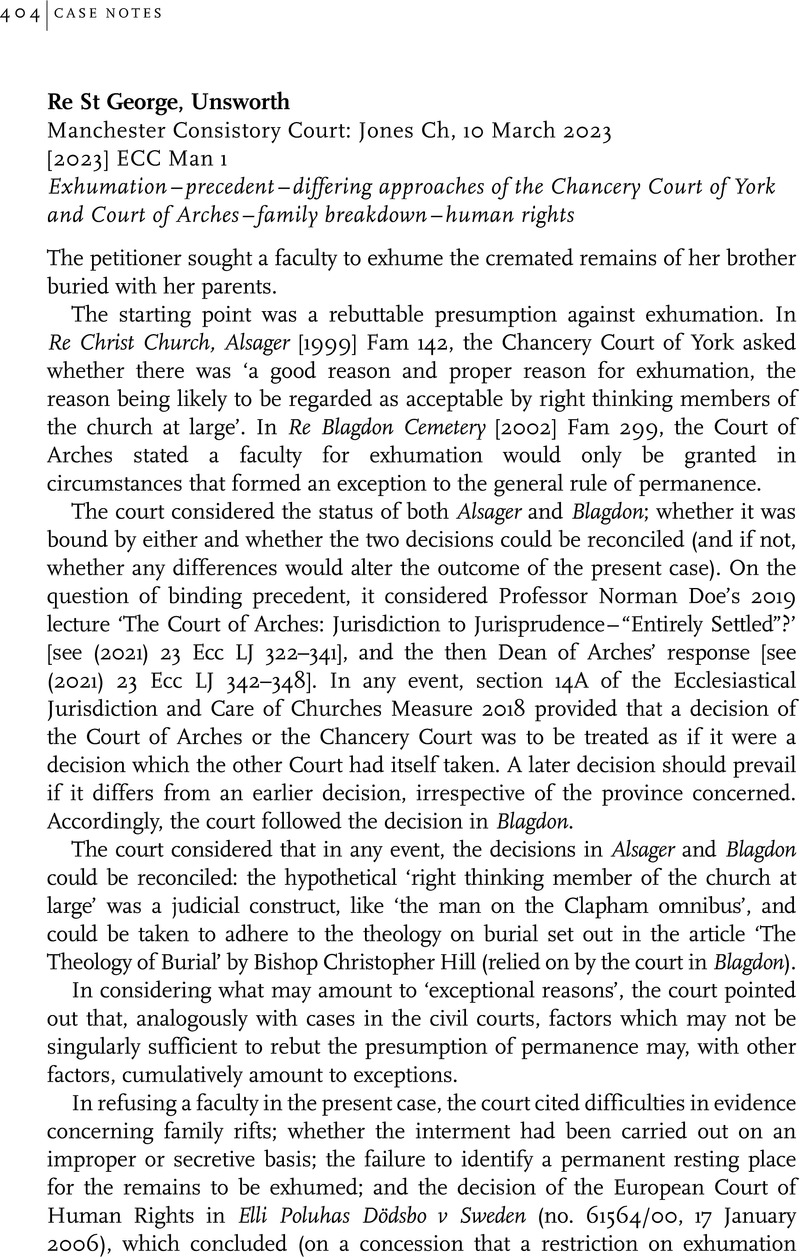No CrossRef data available.
Manchester Consistory Court: Jones Ch, 10 March 2023[2023] ECC Man 1Exhumation – precedent – differing approaches of the Chancery Court of York and Court of Arches – family breakdown – human rights
Published online by Cambridge University Press: 05 September 2023
